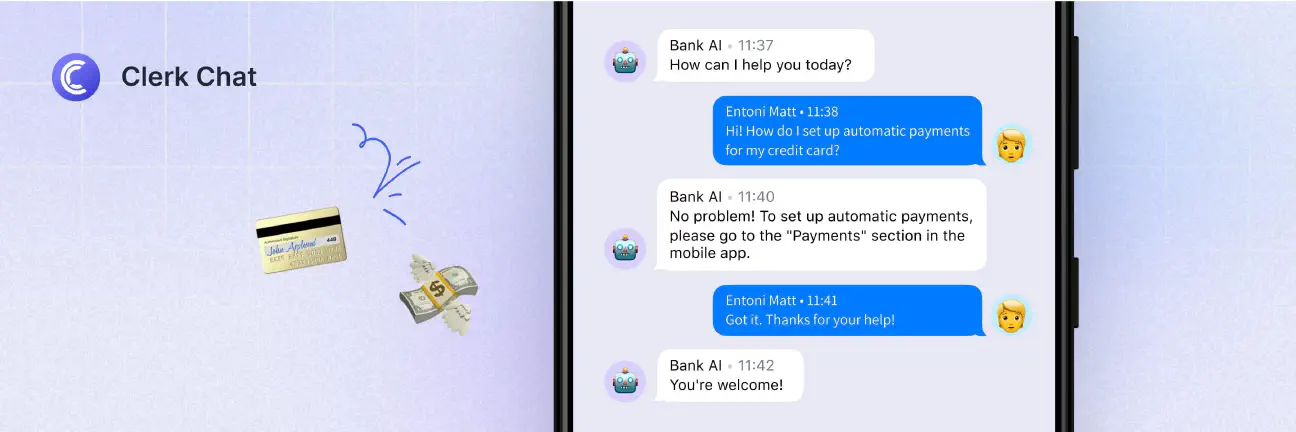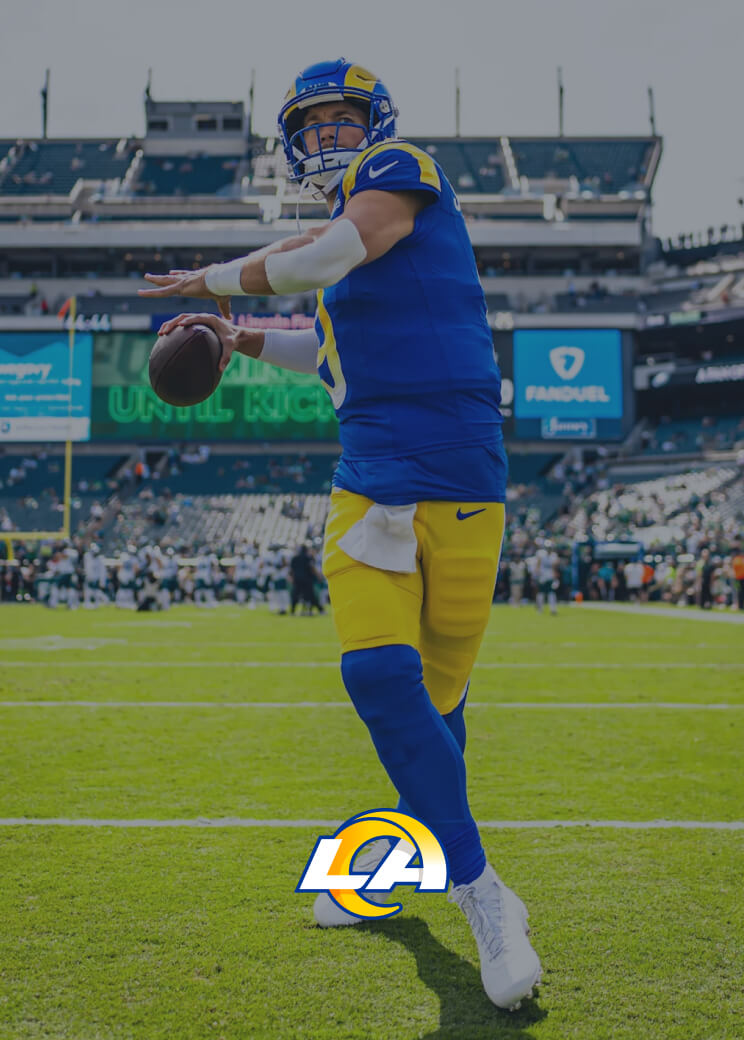What is Conversational Marketing? Benefits, Examples, and Tips for Success
By Team Clerk Chat
- Published: October 4, 2024
Conversational marketing is quickly becoming the go-to way for businesses to boost customer engagement, enhance experiences, and increase revenue.
Why? Because effective marketing isn’t just about drawing attention to products anymore. It’s about forging deep emotional connections with your customers.
The best way to do that is to actively interact with your customers, whether it’s through two-way text messaging, social media, or AI bots built into your website. Conversational marketing allows you to take a dialogue-driven, customer-centric approach to connecting with your customers.
Here, we’ll tell you everything you need to know about conversational marketing, how it works, and how you can implement the right strategy for success.
What is Conversational Marketing?
So, what is conversational marketing?
Conversational marketing is a promotional strategy which involves businesses or brands communicating with customers through personalized, real-time interactions. It can involve a variety of two-way communication methods, such as conversational messaging, chatbots, and social media.
On a broad scale, “conversation marketing” is all about getting to know your customers, and guiding them through their journey with your company. It helps you build more personal connections with customers, increasing your leads, conversion rates, and customer loyalty.
Some of the most common types of conversational marketing strategies include:
- AI lead generation: AI chatbots built into websites and ecommerce platforms are perfect for capturing and qualifying leads for your company. These bots can be triggered as soon as a customer visits a specific page on your website, and they can host extensive discussions with your customers, answering questions about products, or even guiding them towards specific solutions with discount codes and personalized recommendations.
- Conversational sales campaigns: Conversational sales campaigns involve using various channels, such as chatbots, social media, and even Webex texting apps to hold conversations with customers. Through a series of messages, you can find out what customers are looking for, capture information about their interests, and help guide them towards relevant products.
- Two-way messaging: Two-way messaging, enabled by an SMS customer service platform, or a live chat application, allows sales, marketing and customer service representatives to interact with customers in real-time. They can answer questions customers might have about products, provide access to personalized discount codes and rewards, and even help move customers through an onboarding process.

The Benefits of Conversational Marketing
Conversational marketing can benefit businesses in a variety of ways. Investing in conversational business texting, chatbots, and live chat solutions offers an incredible opportunity to reduce sales cycles, unlock valuable insights, and increase customer loyalty.
In all industries, conversational marketing can:
- Improve lead generation: Conversational tools like AI SMS applications and chatbots can rapidly collect data about customers and validate leads. Some solutions even make it easier to learn about your audience and segment customers into different groups for future campaigns.
- Increased conversions: Real-time conversations with customers help sales teams move leads through the sales funnel faster, while boosting your chances of significant purchases. If you can provide customers with the information they need to make purchasing decisions faster, or guide them towards the ideal products for their needs, your revenue will grow.
- Greater personalization: Conversational strategies allow you to invest in more personalized SMS marketing and outreach campaigns. AI tools can draw insights from CRM systems and databases to help you guide customers to the right products or services based on their needs, and tailor experiences to each individual customer group.
- Enhanced customer experiences: 9 in 10 customers want the option to message businesses for information. Conversational marketing allows you to enhance the customer experience, by enabling rapid two-way conversations on various channels. It can help you solve customer issues faster, and even enables 24/7 service with the right conversational AI tools.
- Reduced costs: Conversational AI for finance, healthcare, retail, and other companies can significantly reduce operational costs. AI-enhanced voice agents and chatbots can deliver automated, self-service support across various touchpoints, reducing the number of staff members who need to handle customer queries and requirements.

How to Implement a Conversational Marketing Strategy
Conversational Marketing can boost your brand’s reputation, enhance customer experiences, increase brand loyalty, and turbocharge engagement. But integrating the right strategy into your business processes can be complex.
Here’s a step-by-step guide to implementing your own conversational marketing strategy.
Step 1: Define Clear Goals and Metrics to Track
Before you dive into your conversational marketing strategy, you need a clear idea of what you want to achieve. For instance, do you want to increase access to SMS leads by using automated texting to inform customers about new products, promotions and services?
Are you trying to improve customer satisfaction rates; by ensuring you can quickly answer any questions customers have about your products, or enable personalized two-way conversations with sales reps? Your goals will determine which campaigns you launch, as well as which communication or SMS compliance strategies you need to follow.
For instance, if you’re using text to connect with customers about new products, you’ll need to obtain their consent for communications, and ensure you’re texting them at the right time.
Once you’ve established your goals, identify the metrics you’ll track to monitor success. These metrics could include:
- Sales metrics: Conversion rates, average order value, and number of leads generated.
- Awareness metrics: For example, brand reach, impressions, or website traffic rates.
- Engagement metrics: Response rates, number of messages received, and average interaction time.
- Satisfaction metrics: Customer satisfaction rate, Net Promoter Score, retention rate, and customer churn rate.
Step 2: Choose your Conversational Marketing Channels
Once you have your goals, the next step is identifying which channels you’ll use for conversational marketing. For instance, if you’re focusing on delivering 24/7 customer service, you might want to look at chatbots vs conversational AI systems for your ecommerce website.
If you’re trying to boost lead generation efforts and customer engagement rates, you might experiment with channels like SMS and mass texting, messaging apps like WhatsApp or Microsoft Teams, or social media channels like Instagram and Facebook.
Think carefully about how each marketing channel will affect your customer’s journey. You may decide that you want to combine multiple conversational channels into a single strategy. This could mean using enterprise SMS to inform customers about new products, services, and promotions, but using AI to answer real-time questions on your website at the same time.
Step 3: Choose a Conversational Marketing Platform
Now you know which channels you’re going to be using to connect with and engage customers, you need a platform that allows you to manage and run your campaigns. Not all conversational marketing platforms are alike. When sorting through your options, focus on:
- Channel options: The right platform should support all of the primary channels you’re going to use for conversational promotion. This could mean you need a platform with a Microsoft Teams SMS integration, as well as the option to connect with email platforms, social media, messenger tools, and even voice systems.
- Customizable automation features: A great platform will enable you to create custom, automated workflows, based on your specific needs. For instance, Clerk Chat allows users to send automated text messages in bulk according to a specific schedule, improving their adherence to compliance standards, and boosting engagement rates.
- Compliance features: Maintaining compliant business communication standards is crucial when investing in conversational marketing. Ensure your platform offers end-to-end encryption, access control features, and support for message archiving.
- Ease of use: The easier your platform is to use, the more your team will be able to take full advantage of your conversational strategy. Look for a solution that offers access to convenient features like texting templates, or a no-code workflow builder.
- Scalability: Ensure your chosen platform can scale to suit your evolving needs, supporting everything from new customer support channels, to evolving bulk SMS requirements.
Step 4: Train Your Team and Build Your Campaigns
Once you have your platform, it’s time to train your team on how to use the solution, and start building your conversational marketing campaigns. Ensure your team members understand the best practices and guidelines they’ll need to follow when connecting with customers.
You could create your own dedicated text messaging guide, offering teams insights on what kind of language to use in promotional texts. It’s also worth providing plenty of training on data security and compliance standards. This is particularly important in certain industries.
For instance, if you’re investing in conversational banking, you’ll need to ensure your strategies adhere to SEC and FINRA rules. In the healthcare industry, you’ll need to think about HIPAA compliance. Build your campaigns collaboratively, and implement them with a focus on continuous learning and improvement.
Step 5: Measure, Optimize and Improve
Finally, after you’ve began implementing your conversational marketing campaigns, make sure you have a strategy in place for monitoring your results. Pay attention to the key metrics you defined when you set goals for your marketing strategy, using the analytical tools built into your website, social media applications, and messaging platform.
Constantly look for ways to improve your marketing strategy. For instance, based on what you learn about when customers open and respond to text messages, you could update your SMS schedule. As you learn more about customer preferences and needs, you could introduce new marketing channels, such as an AI chatbot for conversational commerce.
Alongside monitoring your metrics, remember to pay attention to direct feedback from your audience. Reviewing what customers say about your business with social listening tools, or tracking direct feedback from surveys can help you optimize future campaigns.
Quick Tips for Better Conversational Marketing
The steps above will help you to build an effective conversational marketing strategy, but if you want to optimize your ROI (Return on Investment), there are a few additional best practices and tips you should keep in mind:
- Take advantage of AI: While you can rely on human team members to manage back-and-forth interactions with customers, AI solutions can save you a lot of time and money. AI can allow you to send dispatch text messages and promotions to customers in bulk, reduce operational costs, and deliver 24/7 service to customers.
- Personalize the experience: Conversational marketing should feel intimate and personalized for your customers. Make sure you’re segmenting your target audience based on their data and preferences, and adapting your campaigns to suit each segment. For instance, if you’re using SMS for the finance industry, you might have different customer segments for investors, everyday customers, and business accounts.
- Experiment: Your marketing strategy should evolve and scale over time. Take advantage of rich media formats and unique messaging strategies when engaging with your customers. Consider using pictures, GIFs, and videos in your interactions, and explore interaction options across a range of channels.
- Remember compliance: Don’t forget to invest in a comprehensive strategy for compliance. Read up on the rules and regulations relevant to your industry and the channels you’re using. For instance, you can check out this 10DLC SMS compliance guide for tips on how to make sure you’re adhering to SMS regulatory standards.
Embrace the Power of Conversational Promotion
Effective marketing requires more than just an innovative strategy for keeping customers informed about your products. In today’s world, customers want to build deep relationships with their favorite brands. Conversational marketing can help you to connect with your customers on a deeper level, increase engagement, and significantly boost your conversion rates.
With the tips above, and a conversational marketing platform like Clerk Chat, you can unlock the power of dialogue-driven interactions with customers. Our comprehensive platform makes it easy to connect with customers on a range of channels, leverage two-way messaging opportunities, and even analyze the results of every campaign with in-depth reports.
Contact Clerk Chat today to learn more about how you can use our solutions to access the benefits of conversation marketing, or reach out for a free demo of our cutting-edge platform.
In this article:
Ready to use your business number for text messaging?
Thousands of businesses are already experiencing the power of conversational messaging through SMS. Join us. Free trial and paid tiers available.
Get Started#Subscribe
Get product updates in your inbox
Tutorials, features, and Clerk Chat news delivered straight to you.




